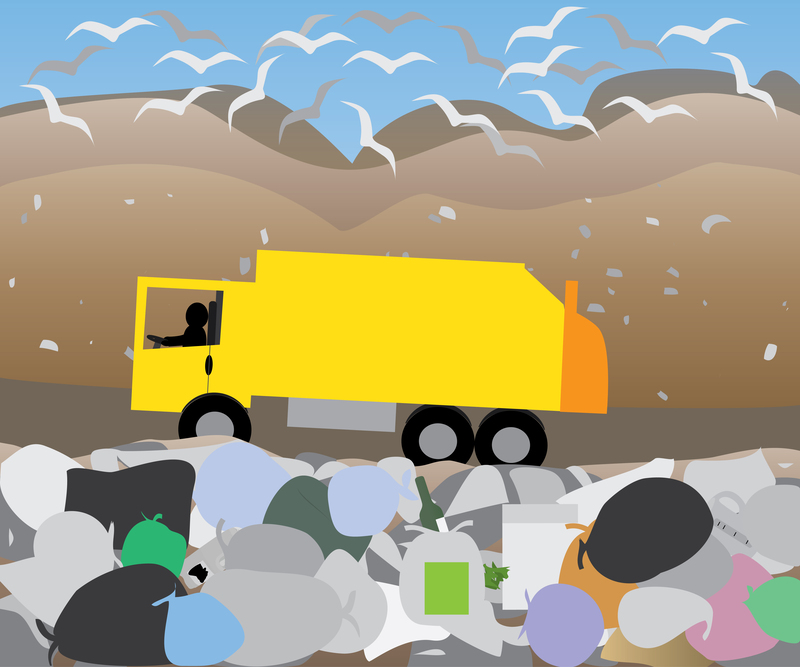Eco-Friendly Tips for Disposing of Your Used PPE Properly
In recent years, the use of personal protective equipment (PPE) has become an essential part of everyday life. From face masks to gloves and face shields, PPE plays a vital role in safeguarding public health. However, the disposal of used PPE items has raised significant environmental concerns, as many of these products are made from single-use plastics that can harm ecosystems if not managed correctly. Adopting eco-friendly practices is crucial to minimize the negative impact of used PPE on our planet. In this comprehensive guide, you'll discover responsible methods for eco-friendly PPE disposal and learn how every small act can contribute to a healthier environment.

Understanding the Environmental Impact of PPE Waste
Personal protective equipment is typically crafted from materials like polypropylene, latex, nitrile, and polyester--substances known for their durability and resistance to degradation. While these materials ensure personal safety, their non-biodegradable nature means that improper PPE waste disposal leads directly to pollution in landfills, rivers, and oceans.
- Face masks and gloves can take up to 450 years to decompose in a landfill environment.
- Discarded PPE can harm wildlife, as animals may ingest or become entangled in these materials.
- Microplastics from broken-down masks and gloves find their way into water sources, posing risks to aquatic life and potentially entering the human food chain.
Being mindful about how we dispose of our used PPE is more important than ever for preserving the environment for generations to come.
Guidelines for Safe and Responsible PPE Disposal
Improper disposal of personal protective equipment not only threatens the environment but may also pose health hazards. To balance safety and sustainability, follow these essential guidelines:
Step 1: Segregate Your Used PPE
Never toss used PPE in the same bin as your regular recyclables. Used masks and gloves can be contaminated with pathogens and should be handled with care. Keep a dedicated bin or bag for disposing of PPE at home or in your workplace.
Step 2: Use a Sealed Bag
Before discarding any used PPE, place it in a biodegradable or compostable bag if possible. Seal the bag tightly to prevent the spread of germs and limit environmental exposure.
Step 3: Follow Local Disposal Protocols
Municipal guidelines for PPE waste management can vary. Many cities now operate designated drop-off points for used PPE. Check with your local council for the best way to discard these materials responsibly.
- Do not flush PPE items down toilets or sinks.
- If no specific PPE waste collection program exists, dispose of sealed PPE as general waste--never in recycling bins.
Eco-Friendly Alternatives for Managing Used PPE
Are there ways to make your PPE disposal more environmentally friendly? Absolutely. Consider these tips to further reduce your carbon footprint and mitigate waste generation.
1. Choose Reusable PPE Whenever Possible
Opt for reusable face masks or washable gloves made from natural fibers such as cotton or bamboo. Reusable PPE significantly lowers the amount of waste entering landfills. Remember to follow proper washing instructions to maintain effectiveness and hygiene.
2. Participate in PPE Recycling Programs
An increasing number of organizations now offer recycling for single-use PPE, including masks, gloves, and face shields. Some notable initiatives include:
- TerraCycle's Disposable Mask Zero Waste Box--Ship used face masks to be processed and recycled into raw materials.
- Local pharmacy collection points--Inquire whether neighborhood drugstores offer PPE disposal or recycling services.
3. Composting Biodegradable PPE
A handful of companies now produce biodegradable masks and gloves designed to decompose under industrial composting conditions. If you use these types of PPE, check that your local composting facility accepts them, or use home composting methods if certified compostable.
4. Educate and Advocate for PPE Waste Solutions
Sometimes the most effective change starts with spreading the word. Educate your family, friends, and colleagues about safe and eco-friendly PPE disposal methods. Advocate for expanded recycling efforts and more sustainable PPE options in your community.
Creative Upcycling of Used PPE (For Non-Contaminated Items)
If you have unused or non-contaminated PPE, consider creative upcycling projects to divert materials from the waste stream. For instance:
- Turn clean masks into reusable shopping bag handles or pouches.
- Use latex gloves for waterproof plant pot liners.
- Convert face shield visors into craft stencils.
Always ensure that items have not been exposed to pathogens before upcycling to safeguard your health.
Top 10 Eco-Conscious PPE Disposal Tips
Here's a quick-reference list of essential reminders for environmentally friendly PPE disposal:
- Never litter or abandon PPE in public spaces.
- Segregate used PPE from recyclable and organic waste at all times.
- Always use a biodegradable or compostable bag for collection.
- Follow local guidelines for PPE waste collection and drop-off points.
- Opt for reusable PPE options when possible.
- Research specialized PPE recycling programs in your area.
- Compost biodegradable PPE if permitted by local facilities.
- Spread awareness of PPE pollution and sustainable habits within your community.
- Support innovations in eco-friendly PPE materials and disposal technology.
- Avoid burning or incinerating PPE at home due to the release of toxic fumes.
The Role of Businesses and Institutions in Sustainable PPE Disposal
Businesses, schools, and healthcare providers are among the largest consumers of PPE. Their active participation in sustainable disposal practices can make a dramatic difference. Here's how institutions can contribute:
- Install clearly labeled PPE disposal bins in strategic locations.
- Arrange for regular collection and safe transport of PPE waste for proper processing or recycling.
- Provide staff training on PPE handling and eco-friendly waste management.
- Collaborate with certified waste management companies offering PPE recycling.
- Factor in environmental impact when purchasing PPE--select suppliers committed to sustainable production and packaging.
Emerging Innovations in PPE Disposal and Recycling
The growing PPE waste challenge has spurred exciting innovations in recycling and biodegradation:
- Researchers are developing enzymatic and chemical processes to break down polypropylene in medical masks into reusable byproducts.
- Biodegradable mask prototypes made from corn starch, cellulose, or bamboo fibers.
- Smart PPE collection bins with UV sterilization to neutralize pathogens before material sorting and recycling.
Continued investment in innovative eco-friendly PPE solutions will be instrumental in solving environmental PPE waste issues in the coming years.
How Individuals Can Make a Positive Impact
Every individual action matters when it comes to proper disposal of personal protective equipment:
- Always dispose of PPE in a responsible manner--never discard used masks or gloves on the ground or in waterways.
- Choose to reuse PPE when it is safe and effective to do so.
- Encourage others to adopt ethical PPE disposal habits.
By integrating these habits into daily routines, you contribute to a collective effort toward a cleaner, safer world.

Frequently Asked Questions About Sustainable PPE Disposal
Can I recycle used face masks and gloves in my household recycling?
No. Most household recycling facilities are not equipped to safely process used PPE due to contamination risks and the materials involved. Instead, look for specialized PPE recycling programs or dispose of items with general waste following local guidelines.
Are there biodegradable or compostable PPE options available?
Yes. Many manufacturers now offer masks and gloves made from biodegradable plant-based materials. Check product labels and ensure that your local composting program accepts these items before composting.
What should I do if I see used PPE littering my community?
If you choose to clean up PPE waste, use gloves and a pick-up tool to avoid direct contact. Place the waste in a sealed bag and dispose of it according to your city's recommendations.
Conclusion: Choose Eco-Friendly PPE Disposal for a Healthier Planet
It's never been more important to address the environmental impacts of PPE waste. While personal safety will always be a top priority, protecting the planet ensures the long-term well-being of both people and nature. By following these eco-friendly tips for disposing of used PPE properly, you help reduce pollution, protect wildlife, and set a conscientious example for others. Every responsible choice counts--together, we can create cleaner communities and a more sustainable future.
Remember: Proper personal protective equipment disposal preserves not only our own health but also the fragile ecosystems we all depend on. Choose to act wisely--because a safer earth begins with effective solutions for PPE waste management.
